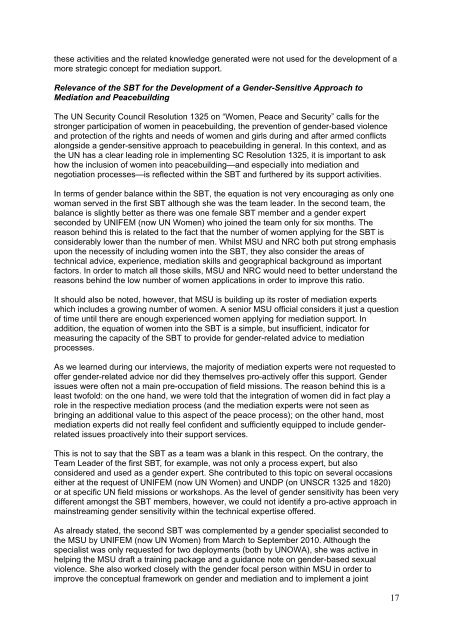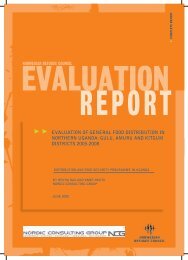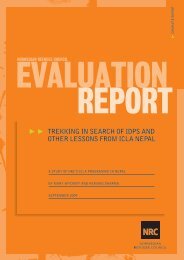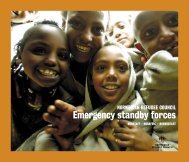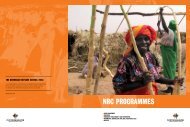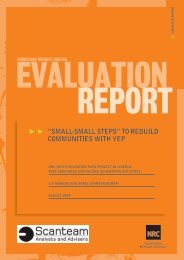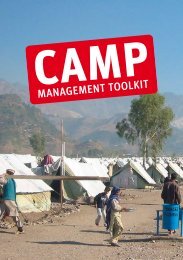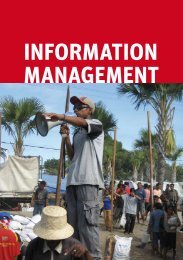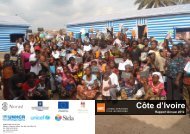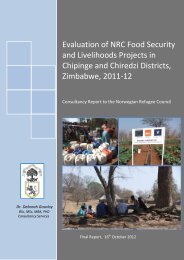Download report here - Norwegian Refugee Council
Download report here - Norwegian Refugee Council
Download report here - Norwegian Refugee Council
- No tags were found...
Create successful ePaper yourself
Turn your PDF publications into a flip-book with our unique Google optimized e-Paper software.
these activities and the related knowledge generated were not used for the development of amore strategic concept for mediation support.Relevance of the SBT for the Development of a Gender-Sensitive Approach toMediation and PeacebuildingThe UN Security <strong>Council</strong> Resolution 1325 on Women, Peace and Security calls for thestronger participation of women in peacebuilding, the prevention of gender-based violenceand protection of the rights and needs of women and girls during and after armed conflictsalongside a gender-sensitive approach to peacebuilding in general. In this context, and asthe UN has a clear leading role in implementing SC Resolution 1325, it is important to askhow the inclusion of women into peacebuilding and especially into mediation andnegotiation processes is reflected within the SBT and furt<strong>here</strong>d by its support activities.In terms of gender balance within the SBT, the equation is not very encouraging as only onewoman served in the first SBT although she was the team leader. In the second team, thebalance is slightly better as t<strong>here</strong> was one female SBT member and a gender expertseconded by UNIFEM (now UN Women) who joined the team only for six months. T<strong>here</strong>ason behind this is related to the fact that the number of women applying for the SBT isconsiderably lower than the number of men. Whilst MSU and NRC both put strong emphasisupon the necessity of including women into the SBT, they also consider the areas oftechnical advice, experience, mediation skills and geographical background as importantfactors. In order to match all those skills, MSU and NRC would need to better understand t<strong>here</strong>asons behind the low number of women applications in order to improve this ratio.It should also be noted, however, that MSU is building up its roster of mediation expertswhich includes a growing number of women. A senior MSU official considers it just a questionof time until t<strong>here</strong> are enough experienced women applying for mediation support. Inaddition, the equation of women into the SBT is a simple, but insufficient, indicator formeasuring the capacity of the SBT to provide for gender-related advice to mediationprocesses.As we learned during our interviews, the majority of mediation experts were not requested tooffer gender-related advice nor did they themselves pro-actively offer this support. Genderissues were often not a main pre-occupation of field missions. The reason behind this is aleast twofold: on the one hand, we were told that the integration of women did in fact play arole in the respective mediation process (and the mediation experts were not seen asbringing an additional value to this aspect of the peace process); on the other hand, mostmediation experts did not really feel confident and sufficiently equipped to include genderrelatedissues proactively into their support services.This is not to say that the SBT as a team was a blank in this respect. On the contrary, theTeam Leader of the first SBT, for example, was not only a process expert, but alsoconsidered and used as a gender expert. She contributed to this topic on several occasionseither at the request of UNIFEM (now UN Women) and UNDP (on UNSCR 1325 and 1820)or at specific UN field missions or workshops. As the level of gender sensitivity has been verydifferent amongst the SBT members, however, we could not identify a pro-active approach inmainstreaming gender sensitivity within the technical expertise offered.As already stated, the second SBT was complemented by a gender specialist seconded tothe MSU by UNIFEM (now UN Women) from March to September 2010. Although thespecialist was only requested for two deployments (both by UNOWA), she was active inhelping the MSU draft a training package and a guidance note on gender-based sexualviolence. She also worked closely with the gender focal person within MSU in order toimprove the conceptual framework on gender and mediation and to implement a joint17


